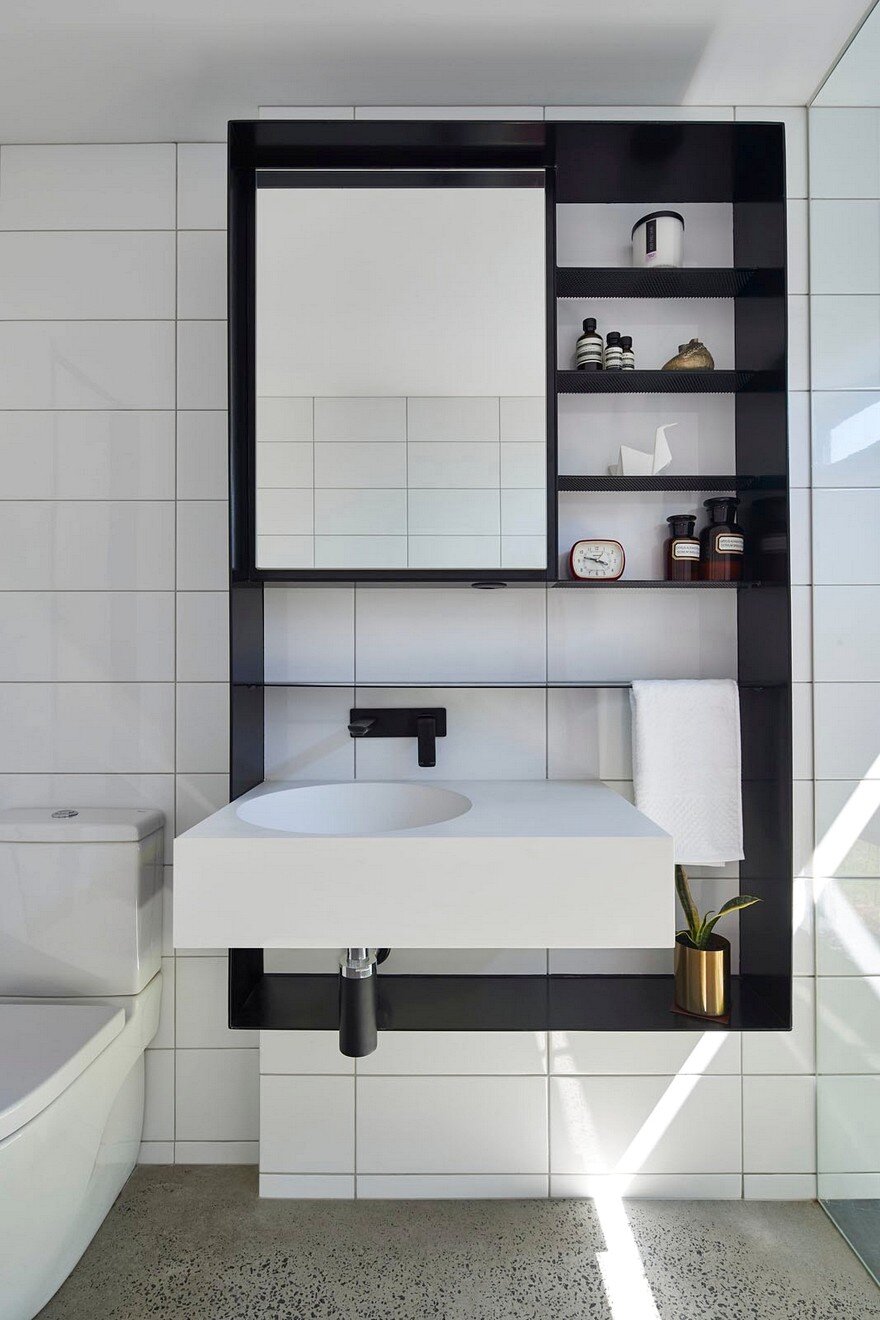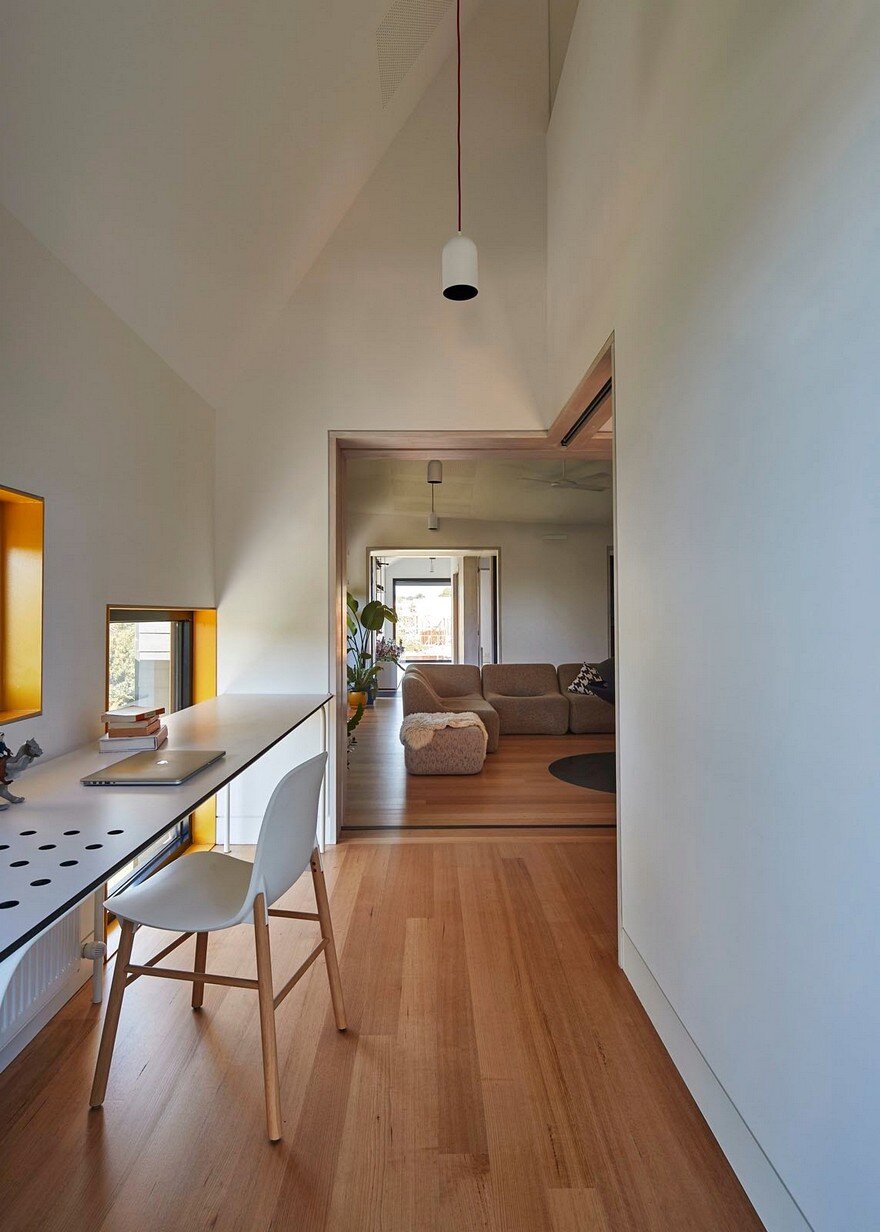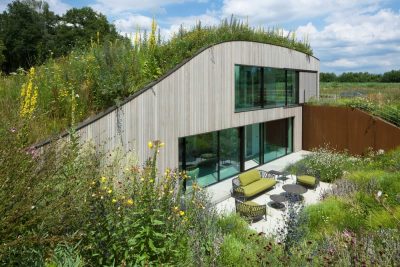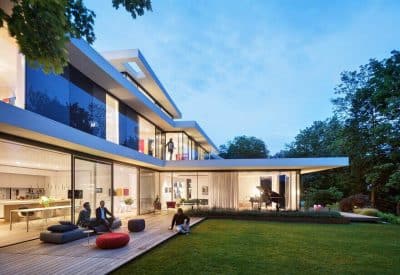Project: Charles House
Architect: Austin Maynard Architects
Project Team: Andrew Maynard, Mark Austin, Kathryne Houchin
Site Area: 720m2
Floor Area: 348m2
Builder: Overend Constructions
Photographer: Peter Bennetts
Charles House is a multi-generational home recently completed by Melbourne- based Austin Maynard Architects. The client’s wanted a house they could live in for at least 25 years. They wanted a home that would grow with the family, anticipating and accommodating different needs at each stage. They wanted a home that could adapt to their young children’s needs as they grew into adulthood, and a place where they could comfortably accommodate grandparents in the near future. They asked for a practical, low maintenance house and garden, filled with light and water features and blurred distinctions between the indoors and outdoors.
Siting/Context
Charles is sited in the upmarket suburb of Kew, Melbourne, on a street lined with McMansions and mock Georgian townhouses. Whilst some neighbouring buildings compete for attention and status, our challenge was to create a home that didn’t dominate the street and was imbedded in gardens. We aimed to create a home that didn’t have a tall defensive fence, but instead offered openness and life to the street.
The Charles house is sited on the southern edge of an east/west block, to provide all the living spaces northern sun and direct access to the garden. The garden runs from the street to the school sports fields at the rear of the site, rethinking the suburban backyard and allowing a visual connection through, creating a continuous green strip.
Intended to house a family of five, plus grandparents, Charles House is a large home relative to our other projects, yet it is small compared to many of its neighbours. To break down the large mass, a number of forms are linked together, each given their own personality by using different slate patterns. Two sections of these forms are lined with bridges and ponds that run out to the garden. The external slate cladding flows through inside in certain areas, which reinforces the separation further.

Multi-Generational housing is a double edged sword. It is wonderful in many ways – a diverse family home is often a healthy family home. However, Multi-Generational homes also reflect the nature of our economy and the dire consequences of housing un-affordability.
Though we approve of increasing the number of people in a home, we also approve of a broader support network from each member of the family unit. We welcome a more complex understanding of what family means and recognise modern urban isolation, longer work days, child care difficulties, increases in retirement costs and the inaccessibility to quality affordable housing – for not only our young, but increasingly the elderly.

Upstairs, the kid’s bedrooms open up to each other, onto hallways and the living area, as well as the study. All spaces can be opened up or isolated, according to ages/functions/uses. As the children grow and change their spaces can adapt to suit their level of engagement with their home and their family. The parent’s room, with walk-in-robe and ensuite, is separated visually and physically, as it’s accessed via a bridge.
Slate
A covenant demanded that any new home built on the site be clad in stone. While there are many recently erected McMansions in the area made of brick, stone and tile, there are also a number of wonderful older homes that were crafted over a century ago. We loved the lichen covered slate roofs on many of these old Edwardian, Federation and Victorian homes and were keen to respond to and connect with this rich material history, without copying or creating a pastiche of the past. The slate contractors (Slate Roof Service Company) engaged to clad Charles House are responsible for the care and maintenance of some of Melbourne’s most important heritage buildings, including the Victorian Parliament and Carlton Garden’s Exhibition Building. During their many decades of working with slate these seasoned craftsmen were excited by the challenges of applying their craft to vertical walls, rather than just the roof. Each of the patterns used on the various facades are patterns recommended by the contractors, from their years of experience working with slate. The beauty, skill and detail usually lost to the sky up on the roof, can be appreciated close up at Charles House.
Sustainability
With its double stud walls, bulk insulation, solar array, water collection, double glazing, adjustable sun shading and siting, Charles House is one of our most sustainable homes.
Rather than simply extruding the existing structure we have and run the new form along the southern boundary, so that it is bathed in northern sunlight. Windows are all double glazed and have protection – awnings, external blinds and adjustable louvres – designed to optimise passive solar gain in winter whilst minimising solar gain in summer, thereby drastically reducing demands on mechanical heating and cooling. The ponds offer further passive evaporative cooling. Solar panels with micro-inverters cover parts of the new roof and water tanks provide ample water for the gardens and the toilets. High performance insulation is everywhere. Where possible we have sourced local trades, materials and fittings.

































